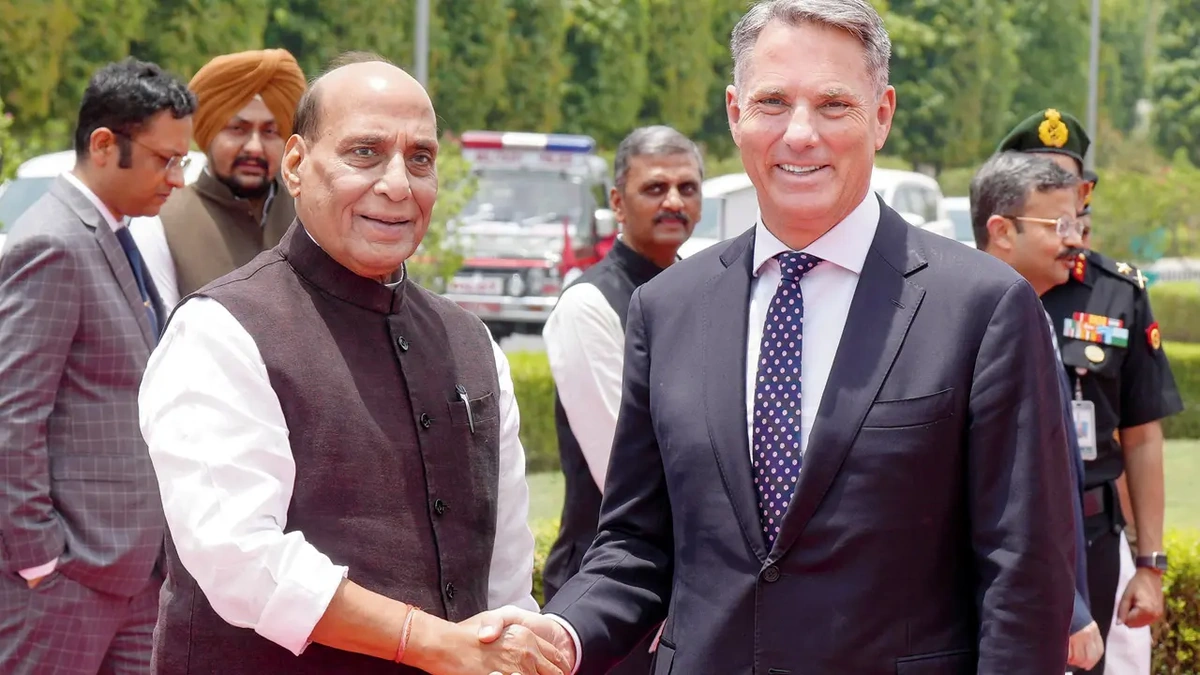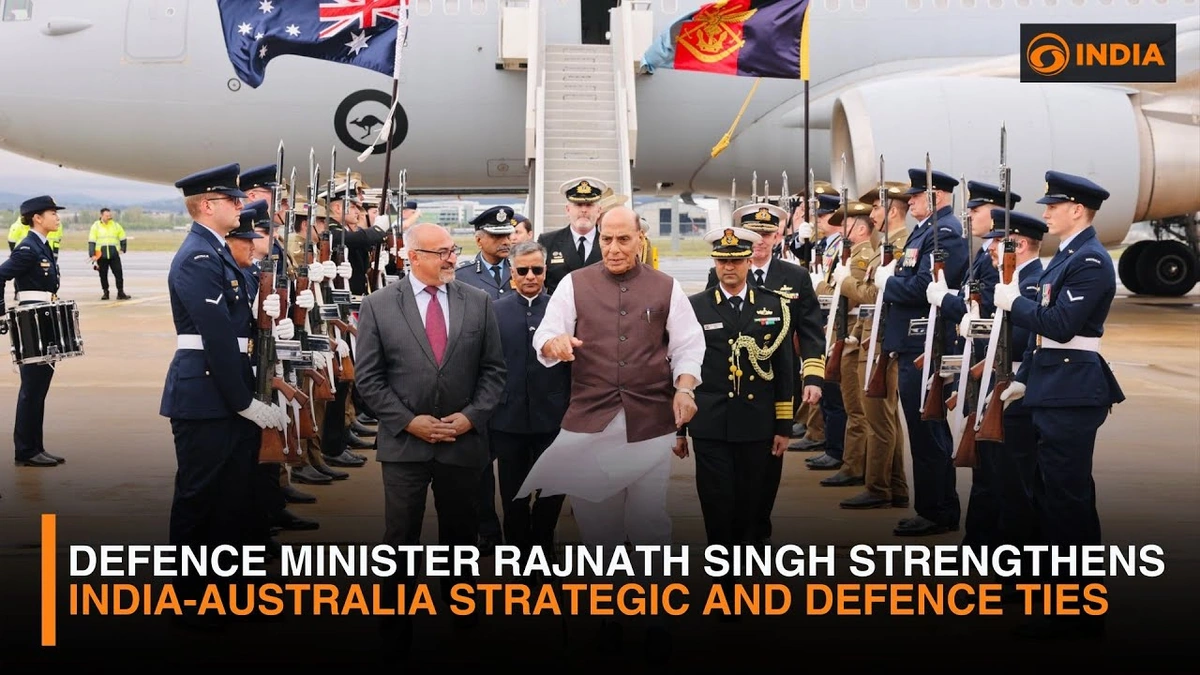India, Australia Ink Security Pact with Military and Submarine Focus
Okay, let’s talk about something big brewing in the Indo-Pacific: the India-Australia security deal. It’s not just another agreement; it’s a signal. A signal of shifting alliances, growing concerns, and a shared vision for a more secure future. This isn’t just about military hardware and submarines; it’s about a deepening strategic alignment that could reshape the region. But, before diving in, let me tell you what makes this deal different and why you should care.
Why This Pact Matters | More Than Just Handshakes

Here’s the thing: security agreements are a dime a dozen. So, what makes this India-Australia security agreement stand out? The devil, as always, is in the details. According to a report by the Australian Strategic Policy Institute, the increased maritime cooperation is a direct response to China’s growing assertiveness in the South China Sea. What fascinates me is the explicit focus on military cooperation and, notably, submarines. This indicates a level of trust and strategic alignment that goes beyond simple diplomatic niceties.
But it’s not just about China. It’s about diversifying partnerships. India, for a long time, leaned heavily on Russia for defense equipment. Diversification is key. Australia, traditionally aligned with the West, is recognizing the importance of India’s role in regional stability. It’s a marriage of convenience, perhaps, but one born out of shared strategic interests and a mutual desire for a stable, multipolar Asia-Pacific. Consider this: defense cooperation between the two nations also provides opportunities for technology transfers, joint military exercises, and enhanced intelligence sharing, all crucial in maintaining a competitive edge.
The Military and Submarine Focus | Decoding the Message
Let’s be honest, when we hear “security pact,” our minds often jump to tanks and fighter jets. But the emphasis on military cooperation – and particularly submarines – deserves a closer look. Submarines are stealthy, strategic assets. They provide a credible deterrent and the ability to project power far from home. Australia’s acquisition of nuclear-powered submarines (though not from India, of course) has already ruffled feathers in Beijing.
And maritime security is really critical. Increased naval exercises, coordinated patrols, and information sharing are all part of the equation. This directly enhances their ability to monitor sea lanes, respond to maritime threats (piracy, illegal fishing), and maintain a presence in key strategic waterways. It also sends a clear message: any attempt to disrupt freedom of navigation in the Indo-Pacific will be met with a coordinated response. This enhanced maritime security also covers cooperation in Humanitarian Assistance and Disaster Relief (HADR) operations, making the region safer for all. A common mistake I see people make is thinking this deal is purely about military might; it’s also about ensuring stability and security for civilian populations.
India’s Strategic Calculus | Playing the Long Game
India’s involvement in this pact underscores its growing confidence and ambition on the world stage. Remember the time India was hesitant to join alliances? Those days are gone. India is now actively forging partnerships to protect its interests and promote its vision of a rules-based international order. And this strategic partnership with Australia fits perfectly into that calculus. According to the Ministry of External Affairs (MEA ) , this deal will further enhance mutual trust and understanding, paving the way for deeper collaboration in various fields.
I initially thought this was a straightforward military arrangement. But I realized it’s actually about India asserting its role as a major power in the Indo-Pacific. It’s a signal to the world that India is willing to work with like-minded countries to address shared challenges. India’s historical hesitations regarding security alliances are fading, replaced by a proactive approach to safeguarding its interests in a rapidly changing geopolitical landscape. By engaging actively with Australia, India enhances its capabilities and strengthens its position in the region. Don’t forget the significance of military technology sharing, further improving India’s defense sector.
The Indo-Pacific Chessboard | Implications for the Region
This India-Australia security cooperation isn’t happening in a vacuum. It’s part of a larger geopolitical game playing out across the Indo-Pacific. China’s rise, the US-China rivalry, and the evolving security dynamics in Southeast Asia are all factors shaping this evolving landscape. What fascinates me is how this pact could influence other countries in the region. Will it encourage them to deepen their security ties with India and Australia? Will it prompt China to recalibrate its own approach? This enhanced bilateral relationship is a major development in this region.
But let’s be clear: this isn’t about creating a new Cold War. It’s about maintaining a balance of power and ensuring that no single country dominates the region. It’s about upholding international law and promoting peaceful resolution of disputes. As per the guidelines mentioned in various strategic forums, increased multilateral engagement is crucial for regional stability. The India-Australia security pact contributes to this objective by fostering cooperation and dialogue.
Let me rephrase that for clarity – this is about building a resilient and inclusive Indo-Pacific where all countries can thrive. Remember when the Quad was just a talking shop? Now look at it. The India-Australia pact strengthens the Quad’s security arm too. Speaking of which, this deal also benefits from existing bilateral and multilateral frameworks. Be sure to check out more about the QUAD security dialogue involving Japan and the USA. And it underscores the importance of multilateral engagement in addressing shared security challenges.
Navigating the Future | Challenges and Opportunities
So, what does the future hold for this India-Australia security pact? There will be challenges, of course. Differences in strategic priorities, bureaucratic hurdles, and domestic political considerations could all complicate matters. But the opportunities are immense. Deeper military cooperation, enhanced intelligence sharing, and joint efforts to address regional security threats could all yield significant benefits. The partnership benefits from a strong political will and a shared commitment to a stable and secure Indo-Pacific.
A common mistake I see people make is thinking that once the agreement is signed, the job is done. Actually, that’s where the real work begins. Translating the words on paper into concrete actions requires sustained effort, consistent dialogue, and a willingness to adapt to changing circumstances. According to reports on The Lowy Institute website , the success of the pact depends on effective implementation and a clear understanding of mutual goals. The Indo-Pacific strategy between India and Australia is a key element. And its execution remains crucial for long-term results.
But, the most important thing is that this pact represents a new chapter in the India-Australia relationship. It’s a testament to their shared values, their strategic convergence, and their commitment to a more secure and prosperous Indo-Pacific. And that, my friends, is something worth paying attention to. It’s a dynamic relationship with the potential to influence the geopolitical landscape of the region.
I initially thought this pact was just about military strength, but then I realized it’s much bigger than that. It’s about securing the future for all nations in the region.
FAQ
What exactly does this security pact entail?
It involves increased military cooperation, information sharing, and coordinated maritime security efforts between India and Australia. This includes joint exercises, technology transfer, and intelligence collaboration.
Why is the focus on submarines so important?
Submarines are critical for projecting power and deterring aggression. They also enhance maritime surveillance capabilities, contributing to regional security.
How does this pact affect India’s relationship with China?
While not explicitly aimed at China, the pact is a response to China’s growing assertiveness in the Indo-Pacific. It aims to ensure a balance of power and uphold international law.
What are the potential challenges in implementing this pact?
Challenges include differences in strategic priorities, bureaucratic hurdles, and domestic political considerations. Sustained effort and dialogue are needed to overcome these obstacles.
How does this pact benefit the broader Indo-Pacific region?
By promoting stability, security, and a rules-based order, the pact contributes to a more resilient and inclusive Indo-Pacific for all countries.
What role does the Quad play in this security equation?
The India-Australia security pact complements the Quad’s efforts to promote regional security and cooperation, strengthening the overall security architecture.













